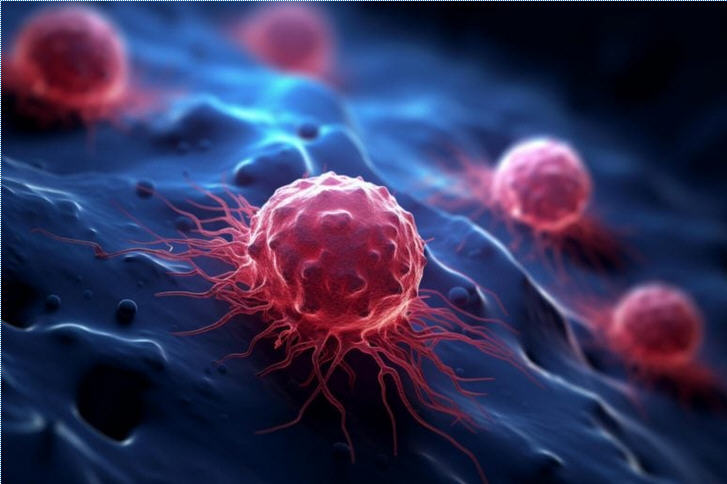 精选
精选
独特的植物物种为癌症提供了令人惊讶的新见解
诸平
据英国诺丁汉大学(University of Nottingham)2024年8月19日提供的消息,独特的植物物种为癌症提供了令人惊讶的新见解(Unique Plant Species Provide Surprising New Insights Into Cancer)。
新的研究探索了多倍体植物(polyploid plants)的适应策略,为癌症治疗和提高作物对环境挑战的抵御能力提供了见解。
全基因组复制(Whole genome duplication简称WGD)发生在所有生命领域。虽然它在植物中最普遍,但它也发生在某些高度侵袭性的癌症(highly aggressive cancers)中。在WGD之后,细胞获得额外的基因组集,被称为多倍体(polyploid)。
我们的大多数主要作物也是多倍体,包括小麦(wheat)、苹果(apples)、香蕉(bananas)、燕麦(oats)、草莓(strawberries)以及西蓝花(broccoli)和花椰菜(cauliflower)等芸苔类作物(brassicas)。多倍体也发生在一些最具侵袭性的胶质瘤(gliomas)——一种脑癌中,并与癌症进展有关。一般来说,多倍体与健壮性(如作物)和对环境的适应性(如转移性癌症)有关。
因为多倍体有更多的基因组需要管理,这些基因组的加倍可能是一个弱点,所以了解是什么因素稳定了年轻的多倍体,以及基因组加倍的种群是如何进化的很重要。相关研究结果于2024年8月7日已经在《细胞报告》(Cell Reports)杂志网站在线发表——Sian M. Bray, Tuomas Hämälä, Min Zhou, Silvia Busoms, Sina Fischer, Stuart D. Desjardins, Terezie Mandáková, Chris Moore, Thomas C. Mathers, Laura Cowan, Patrick Monnahan, Jordan Koch, Eva M. Wolf, Martin A. Lysak, Filip Kolar, James D. Higgins, Marcus A. Koch, Levi Yant. Kinetochore and ionomic adaptation to whole-genome duplication in Cochlearia shows evolutionary convergence in three autopolyploids. Cell Reports, 2024, 43(8): 114576. DOI: 10.1016/j.celrep.2024.114576. ePub. 7 August 2024.
参与此项研究的有来自英国诺丁汉大学(The University of Nottingham, Nottingham NG7 2RD, UK)、英国诺维奇的约翰·英纳斯中心(The John Innes Centre, Norwich NR4 7UH, UK)、西班牙巴塞罗那自治大学(Universitat Autònoma de Barcelona, Barcelona, Spain)、英国莱斯特大学.(University of Leicester, Leicester LE1 7RH, UK)、捷克马萨里克大学中欧理工学院(Central European Institute of Technology, Masaryk University, Brno, Czech Republic)、德国海德堡大学(Heidelberg University, Heidelberg, Germany)、捷克查尔斯大学(Charles University, Benátská 2, Prague, Czech Republic)以及捷克科学院(The Czech Academy of Sciences, Zámek 1, Průhonice, Czech Republic)的研究人员。
在这项发表在《细胞报告》(Cell Reports)上的新研究中,来自诺丁汉大学生命科学学院(University of Nottingham’s School of Life Sciences)等机构的专家们,研究了3种成功的多倍体植物物种是如何进化来管理额外的DNA的,以及它们的进化方式是不同的还是完全相同的。
多倍体的研究见解(Research Insights from Polyploids)
领导这项研究的李维·扬特教授(Professor Levi Yant)说:“了解多倍体面临的一系列问题可能有助于我们理解为什么有些多倍体成功了,而另一些却没有。我们看到成功的多倍体克服了DNA管理方面的具体问题,我们专注于它们的自然解决方案。
在我们的研究中,我们观察了3个物种适应多倍体生活的例子,这些物种不仅存活了下来,而且还茁壮成长。然后我们观察它们是否使用相同的分子溶液生存。令人惊讶的是,他们没有。”
研究人员发现,快速适应多倍体状态的最清晰信号来自于CENP-E分子,这正是其他研究小组最近发现的息肉样癌的致命弱点,也是一个有希望杀死癌症的治疗靶点。下一个最清晰的信号来自“减数分裂基因”(‘meiosis genes’), 李维·扬特教授指出,减数分裂基因在许多癌症中是开启的,而在几乎所有正常细胞中都是关闭的。
对癌症研究和农业的影响(Implications for Cancer Research and Agriculture)
李维·扬特教授继续说:“我们在相同的分子网络中发现了快速适应WGD状态的信号,在CENP-E的情况下,正是这种分子对多倍体癌症特别重要。
与大多数疗法相比,这种WGD给癌症带来了短期优势,但针对这种分子,即CENP-E,可以特异性地灭杀多倍体癌症。这是一个来自完全不同方向的进化重复(或趋同)的引人注目的例子,但却遇到了相同的适应障碍。我们现在可以用这个模型很好地适应多倍体,这可以告诉我们对某些类型癌症的思考。”
这项研究的发现可能有助于更好地理解某些多倍体癌症,如胶质瘤是如何利用多倍体发展的,以及什么分子可以作为任何治疗的一部分来杀死癌细胞。
更广泛地说,这项研究是重要的证据,表明从进化生物学中挖掘这些自然解决方案可以为未来的治疗提供信息。最后,该研究还说明了未来我们可以更好地设计多倍体作物的不同方法,使其更能适应某些灾难性事件,如气候变化。因此此项工作对于人类癌症和作物研究都具有重要参考价值。
这项研究得到了欧洲研究委员会(European Research Council)、英国应用生物学和生物科学研究理事会(BBSRC)和利华休姆信托基金(Leverhulme Trust)的资助。
上述介绍,仅供参考。欲了解更多信息,敬请注意浏览原文或者相关报道。
Whole-genome duplication (WGD) occurs in all kingdoms and impacts speciation, domestication, and cancer outcome. However, doubled DNA management can be challenging for nascent polyploids. The study of within-species polyploidy (autopolyploidy) permits focus on this DNA management aspect, decoupling it from the confounding effects of hybridization (in allopolyploid hybrids). How is autopolyploidy tolerated, and how do young polyploids stabilize? Here, we introduce a powerful model to address this: the genus Cochlearia, which has experienced many polyploidization events. We assess meiosis and other polyploid-relevant phenotypes, generate a chromosome-scale genome, and sequence 113 individuals from 33 ploidy-contrasting populations. We detect an obvious autopolyploidy-associated selection signal at kinetochore components and ion transporters. Modeling the selected alleles, we detail evidence of the kinetochore complex mediating adaptation to polyploidy. We compare candidates in independent autopolyploids across three genera separated by 40 million years, highlighting a common function at the process and gene levels, indicating evolutionary flexibility in response to polyploidy.
转载本文请联系原作者获取授权,同时请注明本文来自诸平科学网博客。
链接地址:https://wap.sciencenet.cn/blog-212210-1447592.html?mobile=1
收藏


